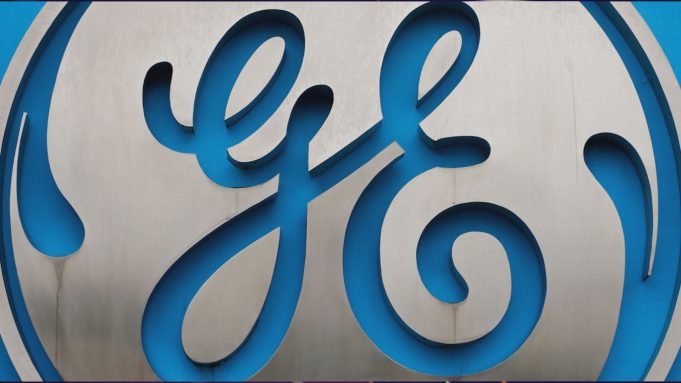This report provides the last five years revenues and revenue growth of General Electric Co (GE) from 2012 to 2016. General Electric generated a total of $123.7 billion revenues during 2016. General Electric reported a revenue growth of 5.4% year-over-year during 2016. The revenues and the revenue growth correspond to the fiscal year ending in December.
GENERAL ELECTRIC REVENUES FROM 2012 TO 2016
Here are the revenues and the revenue growth details of General Electric during the last five years:
- General Electric generated a total of $146.7 billion revenues during 2012. General Electric reported a revenue growth of 0.1% year-over-year during 2012.
- General Electric generated a total of $113.2 billion revenues during 2013. General Electric reported a revenue growth of -22.8% year-over-year during 2013.
- General Electric generated a total of $117.2 billion revenues during 2014. General Electric reported a revenue growth of 3.5% year-over-year during 2014.
- General Electric generated a total of $117.4 billion revenues during 2015. General Electric reported a revenue growth of 0.2% year-over-year during 2015.
- General Electric generated a total of $123.7 billion revenues during 2016. General Electric reported a revenue growth of 5.4% year-over-year during 2016.

WHY ANALYZE REVENUE GROWTH?
Revenue growth is the most commonly analyzed financial metric. Revenue Growth is the percent increase (or decrease) of a company’s revenue between two time periods. It is computed by using the following formula: ((revenues during the time period two – revenues during the time period one) / revenues during the time period one)*100. If the time periods are two consecutive years, then the revenue growth is referred to as the annual revenue growth year-over-year. If the time periods are two consecutive quarters, then the revenue growth is referred to as the quarterly revenue growth quarter-over-quarter. If the time periods refer to the same quarter in the two consecutive years, then the revenue growth is referred to as quarterly revenue growth year-over-year. In case the time periods are two non-consecutive years, then the revenue CAGR (Commutative Annual Growth Rate) is computed.
Revenue growth analysis is important for a number of reasons. First, it helps in understanding how a business is performing. If the revenue growth rates are positive, it means the business is performing well and the revenues are increasing. If the revenue growth rates are negative, it means the revenues are declining and the company needs to take measures to increase them. If they don’t, the company will continue to shrink. Second, a company’s historical revenue growth analysis along with the market size and market share analysis helps in forecasting the future revenues of a company. Third, a comparison of a company’s growth rates with its competitors helps in determining who is winning more business. A revenue growth higher than the industry average translates into increasing market share. Companies with very high revenue growth rates have the potential to be the industry disrupters.

GENERAL ELECTRIC RANKING
With $123.7 billion revenues, General Electric ranked number 14 in the R&P; Research list of top-3000 public companies in the US by revenues during 2016. Each one of the top-3000 companies generated more than $50 million of annual revenues during 2016.
The top-20 companies in the US by revenues during 2016 were:
- Walmart ($482.1 billion)
- ExxonMobil ($226.1 billion)
- Berkshire Hathaway ($223.6 billion)
- Apple ($215.6 billion)
- McKesson ($190.9 billion)
- UnitedHealth Group ($184.8 billion)
- CVS Health ($177.5 billion)
- General Motors ($166.4 billion)
- AT&T; ($163.8 billion)
- Ford Motor ($151.8 billion)
- AmerisourceBergen ($146.8 billion)
- Amazon ($136 billion)
- Verizon ($126 billion)
- General Electric ($123.7 billion)
- Cardinal Health ($121.5 billion)
- Costco ($118.7 billion)
- Walgreens Boots Alliance ($117.4 billion)
- Chevron ($114.5 billion)
- Kroger ($109.8 billion)
- Express Scripts Holding ($100.3 billion)
For the purpose of performance benchmarking of a company with a sector or industry average, R&P; Research associates every company with one sector and one industry. An industry consists of companies with related/similar business models. A sector comprises of a group of related/similar industries. For high-level analysis purposes, related/similar sectors are grouped into sector groups.

For example, Healthcare sector group is comprised of Life Sciences sector and Healthcare Services sector. Life Sciences sector is comprised of following industries: Pharmaceuticals; Medical Devices; Biotechnology; Diagnostics & Scientific Instruments. Healthcare Services sector is comprised of following industries: Medication Stores, PBM and Distributors; Healthcare Payers; Healthcare Providers; Medical Software; Healthcare Research Services.
General Electric is associated with Industrials Sector Group, Industrial Goods & Services Sector, and Industrial Conglomerates Industry.
With $123.7 billion revenues, General Electric ranked number 3 of all the companies in the US Industrials sector group. There were a total of 542 public companies in the US Industrials sector group that had revenues greater than $50 million during 2016.
The top-10 companies in the US Industrials sector group by revenues during 2016 were:
- General Motors ($166.4 billion)
- Ford Motor ($151.8 billion)
- General Electric ($123.7 billion)
- Boeing ($94.6 billion)
- UPS ($60.9 billion)
- United Technologies ($57.2 billion)
- Fedex ($50.4 billion)
- Lockheed Martin ($47.2 billion)
- Honeywell International ($39.3 billion)
- Caterpillar ($38.5 billion)
Industrials sector group is comprised of the following sectors: Aerospace and Defense; Automobiles and Parts; Construction and Building Products; Industrial Goods & Services; Industrial Support Services; Transportation & Logistics.

With $123.7 billion revenues, General Electric ranked number 1 of all the companies in the US Industrial Goods & Services sector. There were a total of 182 public companies in the US Industrial Goods & Services sector that had revenues greater than $50 million during 2016.
The top-10 companies in the US Industrial Goods & Services sector by revenues during 2016 were:
- General Electric ($123.7 billion)
- Honeywell International ($39.3 billion)
- 3M ($30.1 billion)
- International Paper ($21.1 billion)
- Eaton Corp ($19.7 billion)
- Cummins ($17.5 billion)
- Danaher ($16.9 billion)
- Icahn Enterprises ($16.3 billion)
- Emerson Electric ($14.5 billion)
- WestRock ($14.2 billion)
Industrial Goods & Services sector is comprised of the following industries: Industrial Conglomerates; Industrial Machinery; Electrical Components & Equipment; Electronic Equipment & Parts; Containers & Packaging. The definitions for each of the industries is as follows:
- Industrial Conglomerates industry includes Industrial companies engaged in three or more classes of business within the Industrial industry that differ substantially from each other.
- Industrial Machinery industry includes designers, manufacturers, distributors and installers of industrial machinery and factory equipment, such as machine tools, lathes, presses and assembly line equipment. It also includes makers of pollution control equipment, castings, pressings, welded shapes, structural steelwork, compressors, pumps, bearings, elevators and escalators.
- Electrical Components & Equipment industry consists of manufacturers and distributors of electrical parts for finished products, such as printed circuit boards for radios, televisions and other consumer electronics. It also includes makers of cables, wires, ceramics, transistors, electric adapters, fuel cells and security cameras. Manufacturers of Electric motors and generators and mechanical motion control products are also part of this industry.
- Electronic Equipment & Parts industry includes companies offering Manufacturing and Design services for Engineered Components and Products used in different industries. Companies providing Laser-based manufacturing products are part of this industry.
- Containers & Packaging industry includes producers and distributors of cardboard, bags, boxes, cans, drums, bottles, jars and glass used for packaging. Specialty Packaging Products and Pressure-Sensitive Materials producers are also part of this industry.

With $123.7 billion revenues, General Electric ranked number 1 of all the companies in the US Industrial Conglomerates industry. There were a total of 10 public companies in the US Industrial Conglomerates industry that had revenues greater than $50 million during 2016.
The top-10 companies in the US Industrial Conglomerates industry by revenues during 2016 were:
- General Electric ($123.7 billion)
- Honeywell International ($39.3 billion)
- 3M ($30.1 billion)
- Danaher ($16.9 billion)
- Icahn Enterprises ($16.3 billion)
- Illinois Tool Works ($13.6 billion)
- Trinity Industries ($4.6 billion)
- Roper Technologies ($3.8 billion)
- Carlisle Companies ($3.7 billion)
- CSW Industrials ($319.8 million)
COMPANIES SEGMENTATION
To identify and analyze high/low growth or most/least profitable similar-size companies in different sectors or industries, R&P; research classifies all companies into different segments based upon their revenues, revenue growth, and net profit margins.
Based upon their annual revenues, the companies are classified into one of the following four segments:
- Mega companies, having revenues greater than $50 billion.
- Very Large companies, having revenues between $10 billion and $50 billion.
- Large companies, having revenues between $1 billion and $10 billion.
- Mid-size companies, having revenues between $50 million and $1 billion.
With $123.7 billion revenues, General Electric was in the Mega companies revenue segment during 2016. There were a total of 54 companies in the Mega companies revenue segment during 2016.

Based upon their annual revenue growth, the companies are classified into one of the following eight segments:
- Very High positive growth companies, having annual revenue growth greater than 50%.
- High positive growth companies, having annual revenue growth between 20% and 50%.
- Medium positive growth companies, having annual revenue growth between 5% and 20%.
- Low positive growth companies, having annual revenue growth between 0% and 5%.
- Low negative growth companies, having annual revenue growth between -5% and 0%.
- Medium negative growth companies, having annual revenue growth between -20% and -5%.
- High negative growth companies, having annual revenue growth between -50% and -20%.
- Very High negative growth companies, having annual revenue growth less than -50%.
With 5.4% revenue growth year-over-year, General Electric was in the Medium positive revenue growth segment during 2016. There were a total of 876 companies in the Medium positive revenue growth segment during 2016. Of the US top-3000 companies, 1985 (nearly two-third of the total) had positive revenue growth and 1015 (nearly one-third of the total) had negative revenue growth during 2016.
Based upon their annual net profit margin, the companies are classified into one of the following eight segments:
- Very High positive margin companies, having net profit margin greater than 50%.
- High positive margin companies, having net profit margin between 20% and 50%.
- Medium positive margin companies, having net profit margin between 5% and 20%.
- Low positive margin companies, having net profit margin between 0% and 5%.
- Low negative margin companies, having net profit margin between -5% and 0%.
- Medium negative margin companies, having net profit margin between -20% and -5%.
- High negative margin companies, having net profit margin between -50% and -20%.
- Very High negative margin companies, having net profit margin less than -50%.

With a net margin of 7.1%, General Electric was in the Medium positive net profit margin segment during 2016. There were a total of 1086 companies in the Medium positive net profit margin segment during 2016. Of the US top-3000 companies, 2244 (nearly three-fourth of the total) had positive net profit margin and 756 (nearly one-fourth of the total) had negative net profit margin during 2016.
COMPANY BUSINESS SUMMARY
General Electric Company operates as an infrastructure and technology company worldwide. Its Power segment offers gas and steam power systems; maintenance, service, and upgrade solutions; distributed power gas engines; water treatment, wastewater treatment, and process system solutions; and nuclear reactors, fuels, and support services. The company’s Renewable Energy segment provides wind turbine platforms, and hardware and software; onshore and offshore wind turbines; and solutions, products, and services to hydropower industry. Its Oil & Gas segment offers surface and subsea drilling and production systems, and equipment for floating production platforms; and compressors, turbines, turboexpanders, reactors, industrial power generation, and auxiliary equipment. The company’s Aviation segment designs and produces commercial and military aircraft engines, integrated digital components, and electric power and mechanical aircraft systems; and provides aftermarket services. Its Healthcare segment offers diagnostic imaging and clinical systems; products for medication discovery, biopharmaceutical manufacturing, and cellular technologies; and medical technologies, software, analytics, cloud solutions, and implementation services. The company’s Transportation segment provides freight and passenger locomotives, and rail and support advisory services; and parts, integrated software solutions and data analytics, software-enabled solutions, mining equipment and services, and marine diesel and stationary power diesel engines and motors, as well as overhaul, repair and upgrade, and wreck repair services. Its Energy Connections & Lighting segment offers industrial, grid, power conversion, automation and control, lighting, and current solutions. The company’s Capital segment provides industrial and energy financial services; and commercial aircraft leasing, financing, and consulting services. General Electric Company was founded in 1892 and is based in Boston, Massachusetts.
















